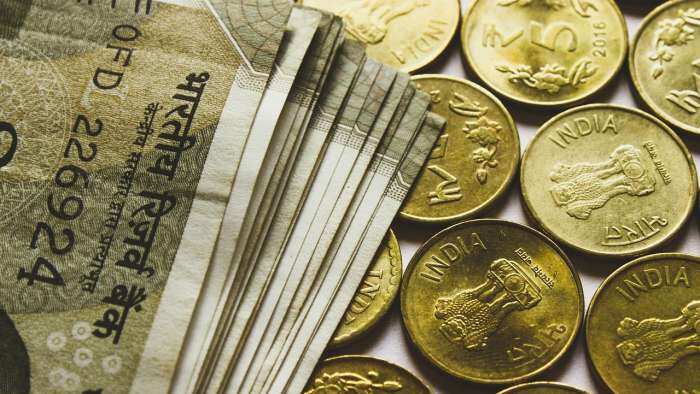India poised to become world's third largest consumer market by 2026 outpacing Germany, Japan
India is set to solidify its position as a global economic powerhouse as it gears up to become the world's third-largest consumer market by 2026, according to the 'India Economic Perspectives' report by UBS.
)
India is set to solidify its position as a global economic powerhouse as it gears up to become the world's third-largest consumer market by 2026, according to the 'India Economic Perspectives' report by UBS. Despite facing challenges, the country's consumer market has shown remarkable resilience and growth over the past decade.
According to the report, India is expected to outpace Germany by 2024 and Japan by 2026, solidifying its position as a global economic powerhouse. The country's rapid ascent is driven by several key factors, including its large population and rising middle class.
In 2023, India's household consumption surged to USD 2.1 trillion, nearly doubling from the previous decade, with an annual compound growth rate of 7.2 per cent.
This growth rate surpasses that of major economies like China, the US, and Germany. The impressive growth trajectory positions India as one of the fastest-growing economies and the fifth-largest consumer market globally.
The projections indicate that India will surpass Germany and Japan to become the world's third-largest consumer market by 2026. This forecast comes as India's consumer market continues to exhibit robust growth and expansion.
A key driver of this growth is the emerging wealthy segment in India. Euromonitor data reveals that in 2023, around 40 million individuals, constituting 4 per cent of the population aged 15 years and above, belonged to the affluent category, with an annual income exceeding USD10,000.
Projections indicate that this figure is set to more than double over the next five years, indicating a significant expansion of purchasing power among the Indian populace.
India's large domestic market, capable of absorbing manufacturing output, gives it a competitive edge over its Asian peers, particularly in leveraging the 'China+1' supply chain strategy.
Additionally, policy initiatives and structural reforms have further bolstered India's attractiveness as a manufacturing hub and consumer market.
However, analysts emphasize the need for sustained high-quality job creation to ensure long-term consumption growth.
Despite these positive trends, India's consumption growth has exhibited some disparities, characterized by a K-shaped pattern post-pandemic.
The "K-shaped pattern" refers to an economic trend where different segments of society experience divergent outcomes, leading to an overall increase in economic inequality.
While affluent segments of society have shown robust demand for premium goods and services such as luxury cars, upscale housing, and high-end smartphones, the demand for entry-level and mass-market products has been subdued.
Factors contributing to this divergence include differential income continuity during the pandemic, improved access to consumer credit, and lower household savings.
Looking ahead, analysts expect household consumption growth to remain below trend in the fiscal years 2025 and 2026, with a projected growth rate of 4-5 per cent year-on-year.
Urban mass-market demand is expected to remain modest due to softening corporate wage growth and moderating personal loan growth. However, the premium and affluent segments are anticipated to continue performing well, driven by factors such as rural consumption recovery, expected normal monsoons, and the anticipated capex recovery.
India's ascent to becoming the world's third-largest consumer market underscores its growing economic significance on the global stage.
With a young and dynamic population, coupled with ongoing reforms and investments, India presents vast opportunities for businesses and investors alike, signaling a promising future for the nation's economy and consumer market.
Get Latest Business News, Stock Market Updates and Videos; Check your tax outgo through Income Tax Calculator and save money through our Personal Finance coverage. Check Business Breaking News Live on Zee Business Twitter and Facebook. Subscribe on YouTube.
RECOMMENDED STORIES

Power of Compounding: How soon will monthly SIP of Rs 6,000, Rs 8,000, and Rs 10,000 reach Rs 5 crore corpus target?

Highest FD rates: Here's what SBI, PNB, Canara Bank, HDFC Bank, ICICI Bank are giving to senior citizens on fixed deposits

SBI Guaranteed Return Scheme: Know how much maturity amount you will get on Rs 2 lakh, 2.5 lakh, 3 lakh, 3.5 lakh and Rs 4 lakh investments under Amrit Vrishti FD scheme

SBI Senior Citizen Latest FD Rates: What senior citizens can get on Rs 7 lakh, Rs 14 lakh, and Rs 21 lakh investments in Amrit Vrishti, 1-, 3-, and 5-year fixed deposits
01:41 PM IST








 India poised to become third-largest consumer market after US and China: WEF
India poised to become third-largest consumer market after US and China: WEF Worldwide PC shipments declined 2% in 4Q17, 2.8% for the year: Gartner
Worldwide PC shipments declined 2% in 4Q17, 2.8% for the year: Gartner